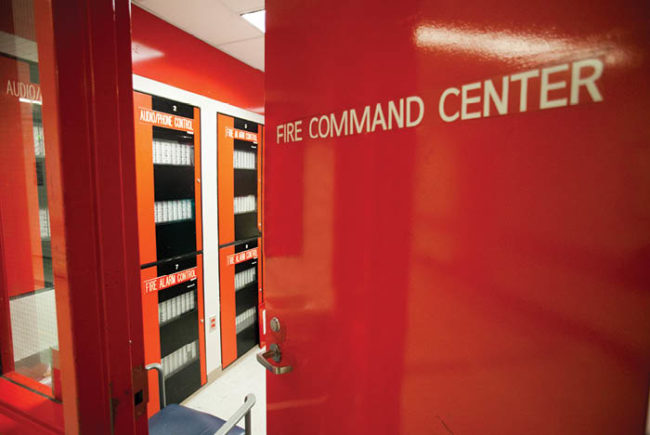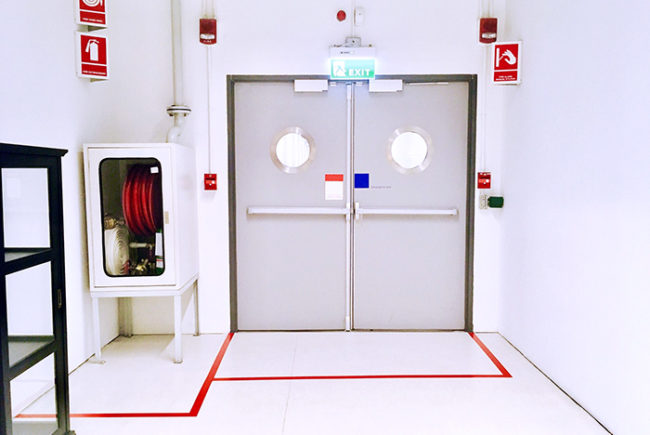Medical gases play a critical, life-saving role in health care facilities. Oxygen, nitrous oxide, nitrogen, carbon dioxide and medical air are vital to areas like patient rooms, recovery areas and operating rooms.
Because of their crucial nature, clinical staff must have immediate access to medical gases. Simultaneously, the potentially hazardous gases must be stored and maintained in a way that ensures a safe environment for patients and staff, as regulated by the National Fire Protection Association (NFPA) codes, which set a standard of health care compliance rules and regulations.
But an NFPA code regulating medical gases is drawing opposition from health care leaders who say the regulations will prevent some hospitals from accessing these critical medical gases.
A change to the NFPA 99, Health Care Facilities Code, would reduce the maximum allowable quantities (MAQ) of medical gases in hospitals, essentially prohibiting hospitals from delivering gases above the building’s fifth floor, impeding patient care in some circumstances.
“It is not feasible to provide health care with these limitations,” says Chad Beebe, Deputy Executive Director, American Society for Health Care Engineering (ASHE). “Although this will speed up the use of alternate methods and equipment such as oxygen concentrators, currently there aren’t similar alternatives with other medical gases commonly used. What’s more, the impetus for this change was not clear.”
Historically, medical facilities were exempt by the NFPA 1, Fire Code, from compliance with the MAQs for the gases used for medical purposes.
NFPA 99, which has evolved significantly over the past decade, is on a three-year revision cycle and was last updated in 2021. Medical gases are regulated under NFPA 99, which establishes criteria for levels of health care services or systems based on risk to the patients, staff or visitors in health care facilities.
However, in 2018, the NFPA 99 medical gas piping committee inserted a reference to medical gas requirements from NFPA 55, Compressed Gases and Cryogenic Fluids Code, which regulates the items named in its title for many industries, including health care.
Because the change was subtle, it wasn’t detected until other issues prompted close review of both NFPA 99 and NFPA 55. In 2021, Beebe issued written opposition to the change to the NFPA 55 Technical Committee on Industrial and Medical Gases and the NFPA 99 Technical Committee on Piping Systems. The rule is not yet being enforced because hospitals are currently required to meet the 2012 edition of NFPA 99 under the Centers for Medicare & Medicaid Services’ (CMS) Conditions of Participation.
“Although the requirements seem the same here, there are slight differences that greatly change the applicability of these requirements,” Beebe wrote to the NFPA Technical Committee on Industrial and Medical Gases.
“We believe as written, the proposal will not reflect the practices in hospitals today, and in larger facilities will represent a hardship,” wrote Ronald M. Smidt in comments to the NFPA 99 Technical Committee on Piping Systems in 2021. Smidt, a senior consultant at MLS Dedicated Healthcare Partners, Barrington, Ill., represents the NFPA Health Care Section on the Technical Committee on Piping Systems.
Although NFPA 55 does have a section regulating health care facilities, the standard doesn’t adequately address the needs of many hospitals, Beebe says.
“NFPA 55 is predominantly focused on industrial uses, and health care users didn’t have a lot of input on the health care section of NFPA 55,” he says. “Health care has never had a safety issue with storing or using medical gases on upper floors. This regulation does not make sense for hospitals, and we would like to get it changed.”
While proposals to change the medical gases section have failed to pass to date, Beebe says he would like NFPA 99 to adopt a new table with regulations specifically pertaining to medical gases in health care and remove the section directing users to NFPA 55.
James S. Peterkin, PE, LEED AP, SASHE, Senior Fire Protection Engineer, TLC Engineering Solutions Philadelphia, suggests referring to the NFPA 1, Fire Code.
“We need to look no further than NFPA 1, Fire Code, for the correct way to properly correlate the maximum allowable quantities of medical gases,” Peterkin says. “NFPA 1 extracts the requirements from NFPA 55 into the Fire Code, but rightly stipulates that the requirements of NFPA 55 do not apply to the use and handling of medical gases in health care facilities that comply with NFPA 99.”
If the error is not corrected, Beebe says health care will be in a difficult position on a number of levels. Hospitals on upper-level floors would need to make their own oxygen with concentrators, sophisticated electronic machines that filter air into a highly concentrated oxygen. Because compressed oxygen is expensive and can be difficult for hospitals logistically, this option is not sustainable for many facilities.
“This option would be very cost-prohibitive for hospitals and suppliers,” Beebe says. “It’s really in all of our interests to make sure this standard is changed as quickly as possible.”
The issue is set to come before the NFPA 99 Technical Committee on Piping Systems in August. Beebe hopes to include the updated section in the next NFPA edition in 2024.




